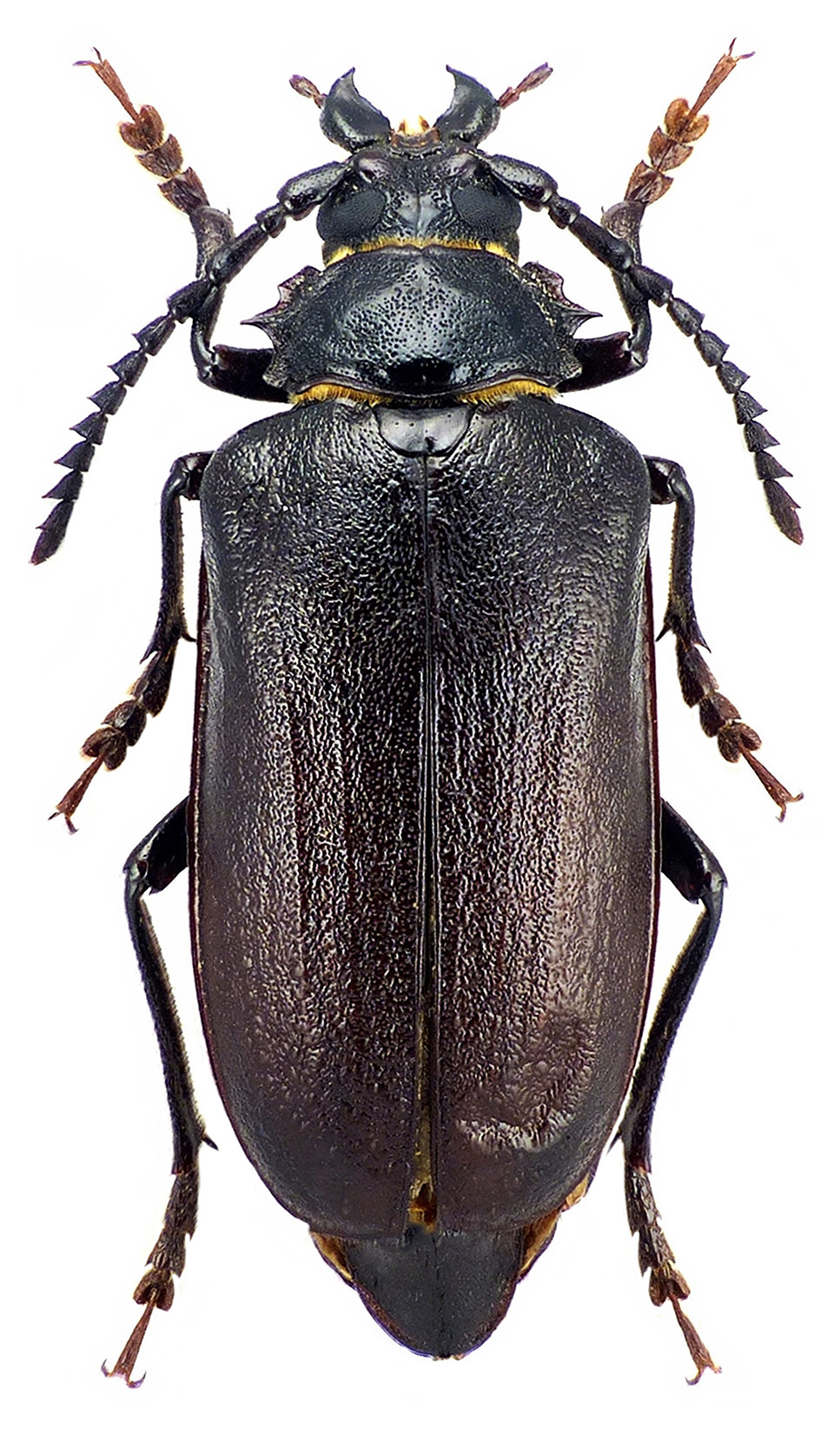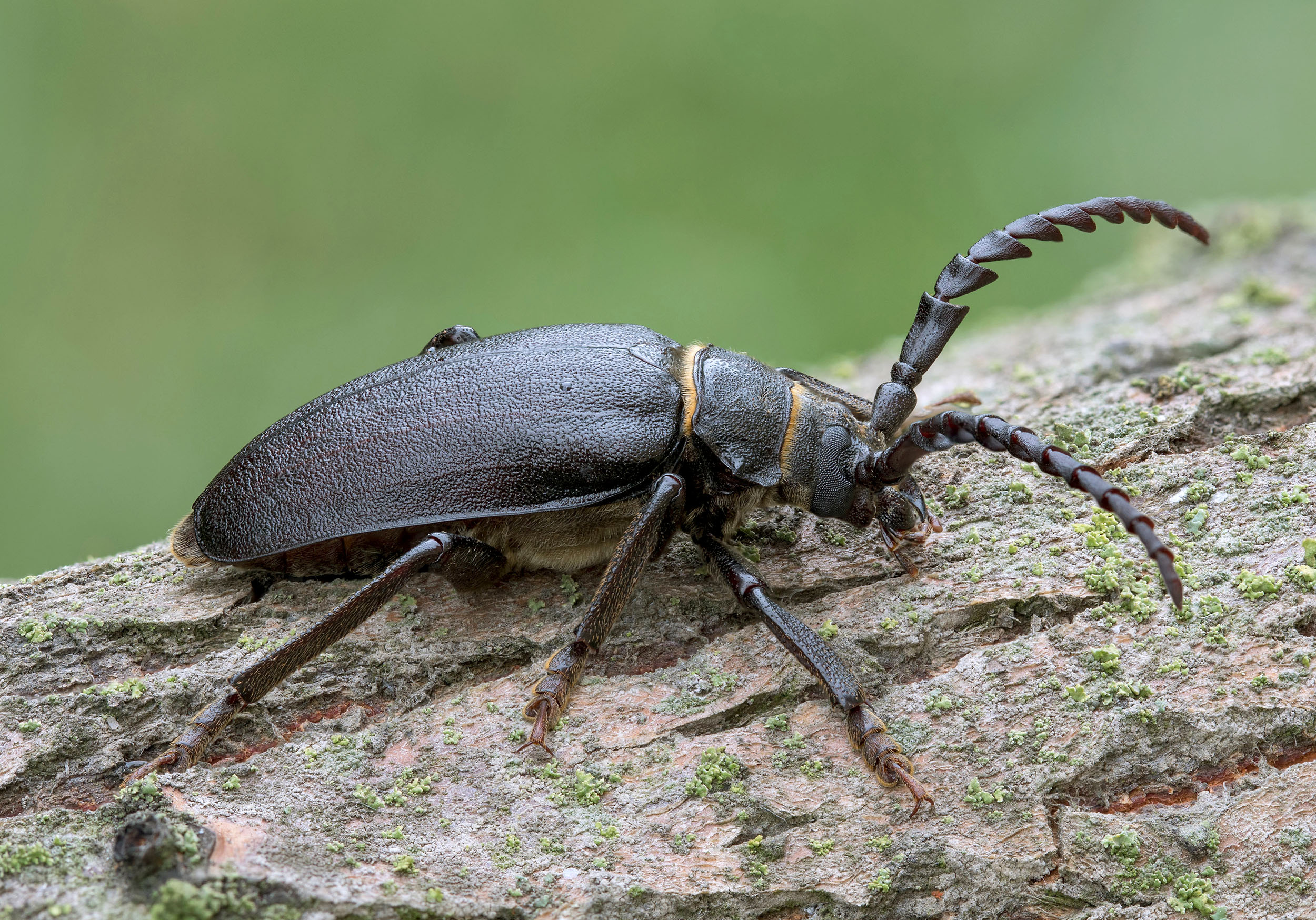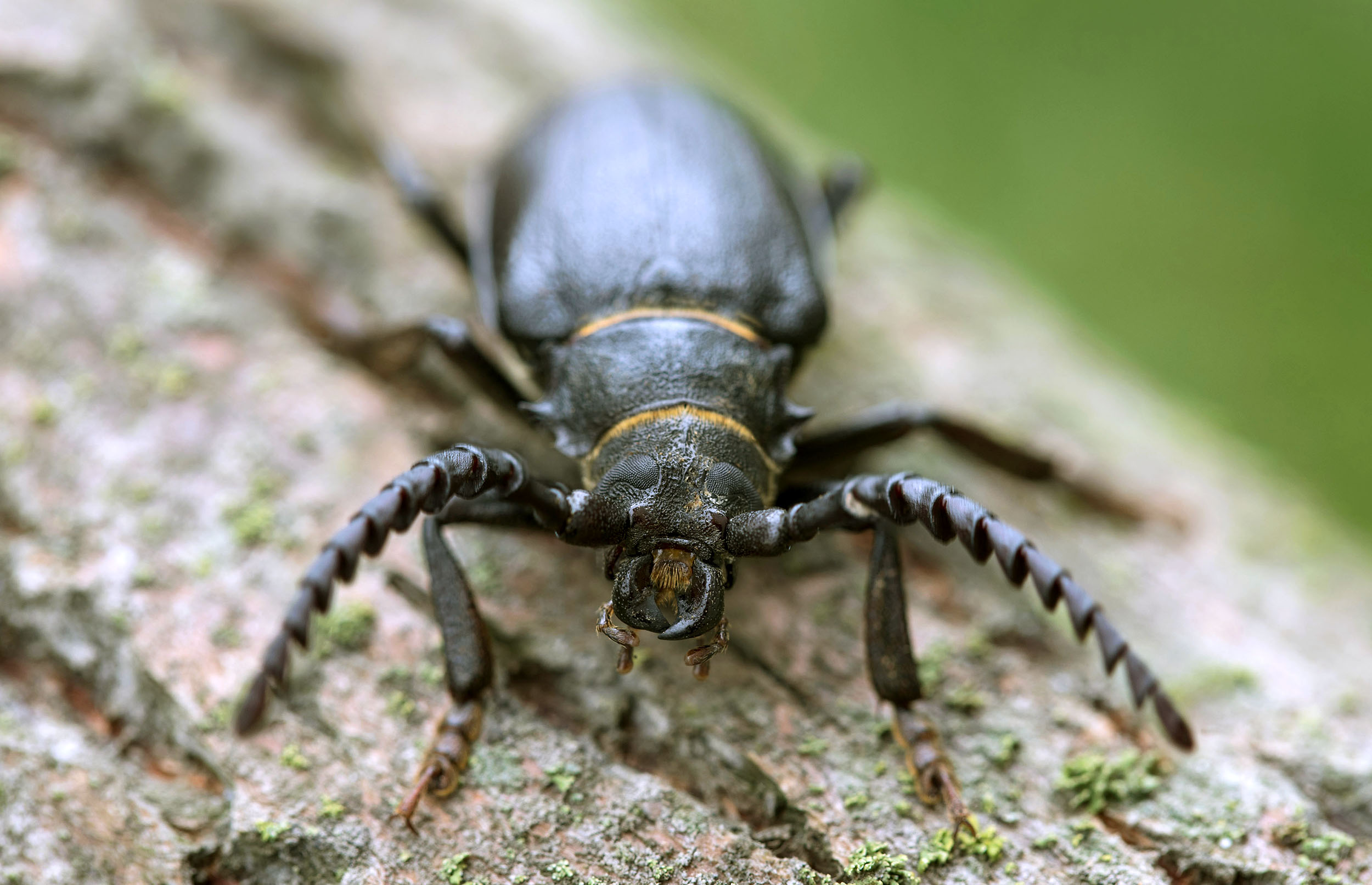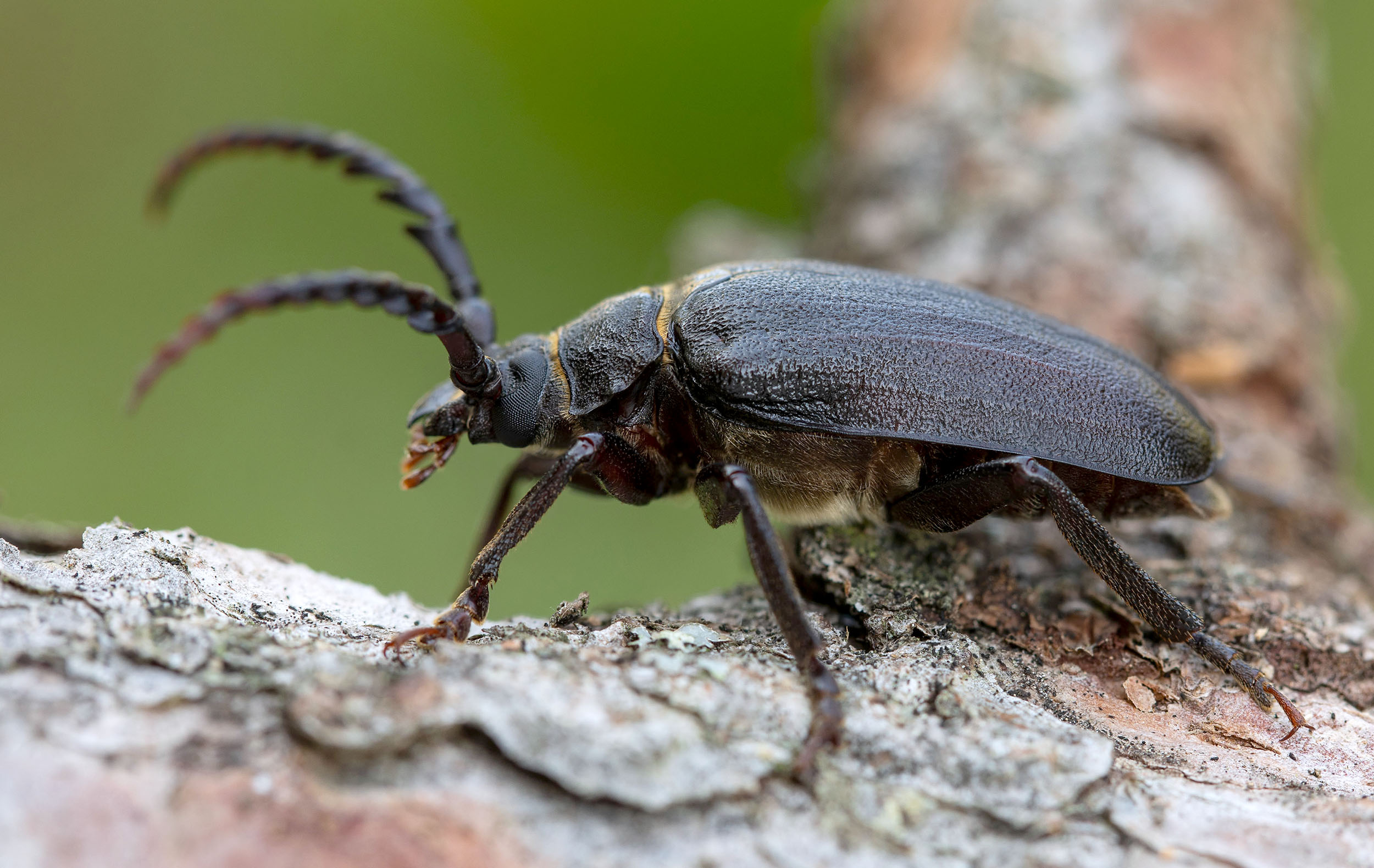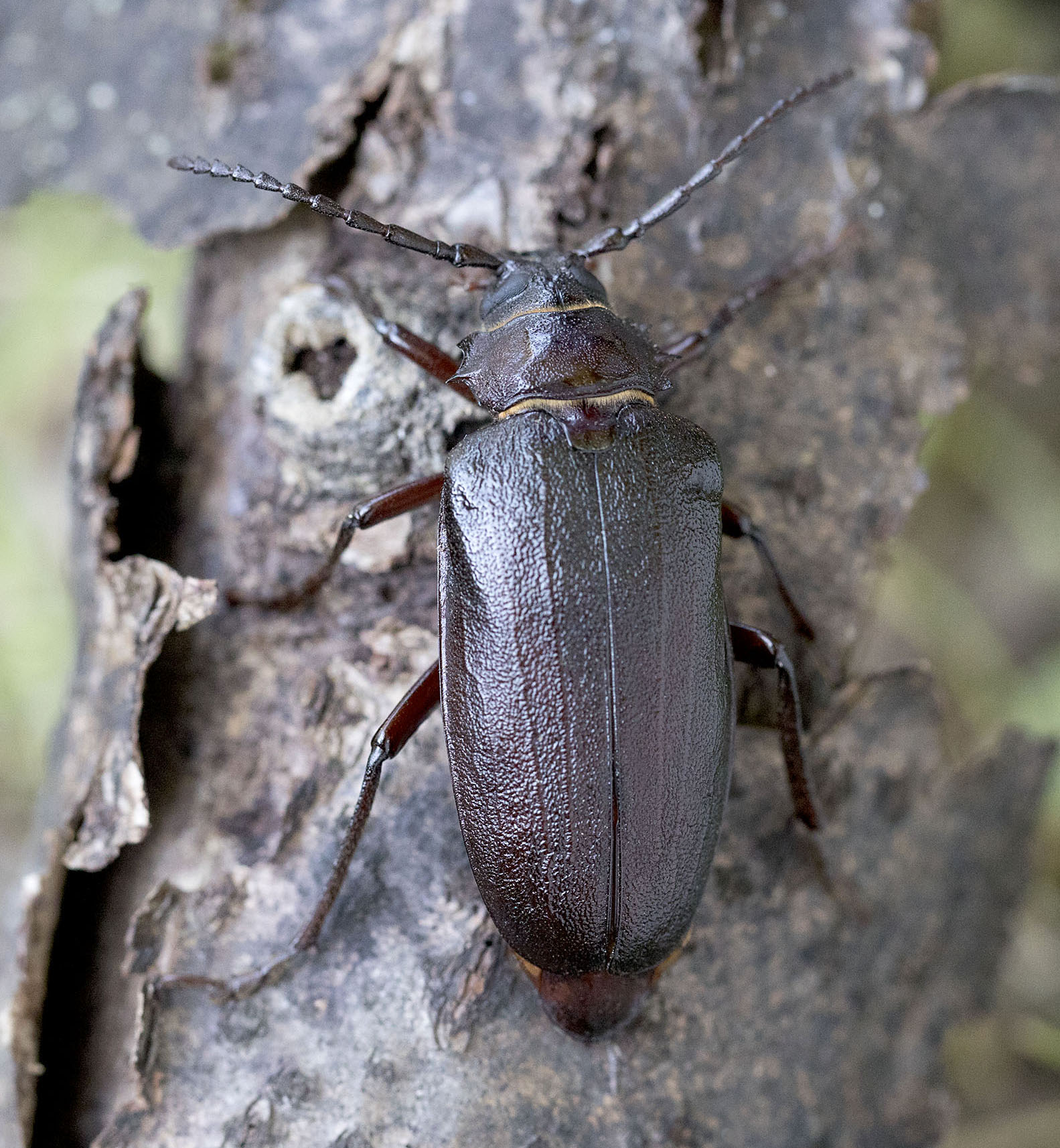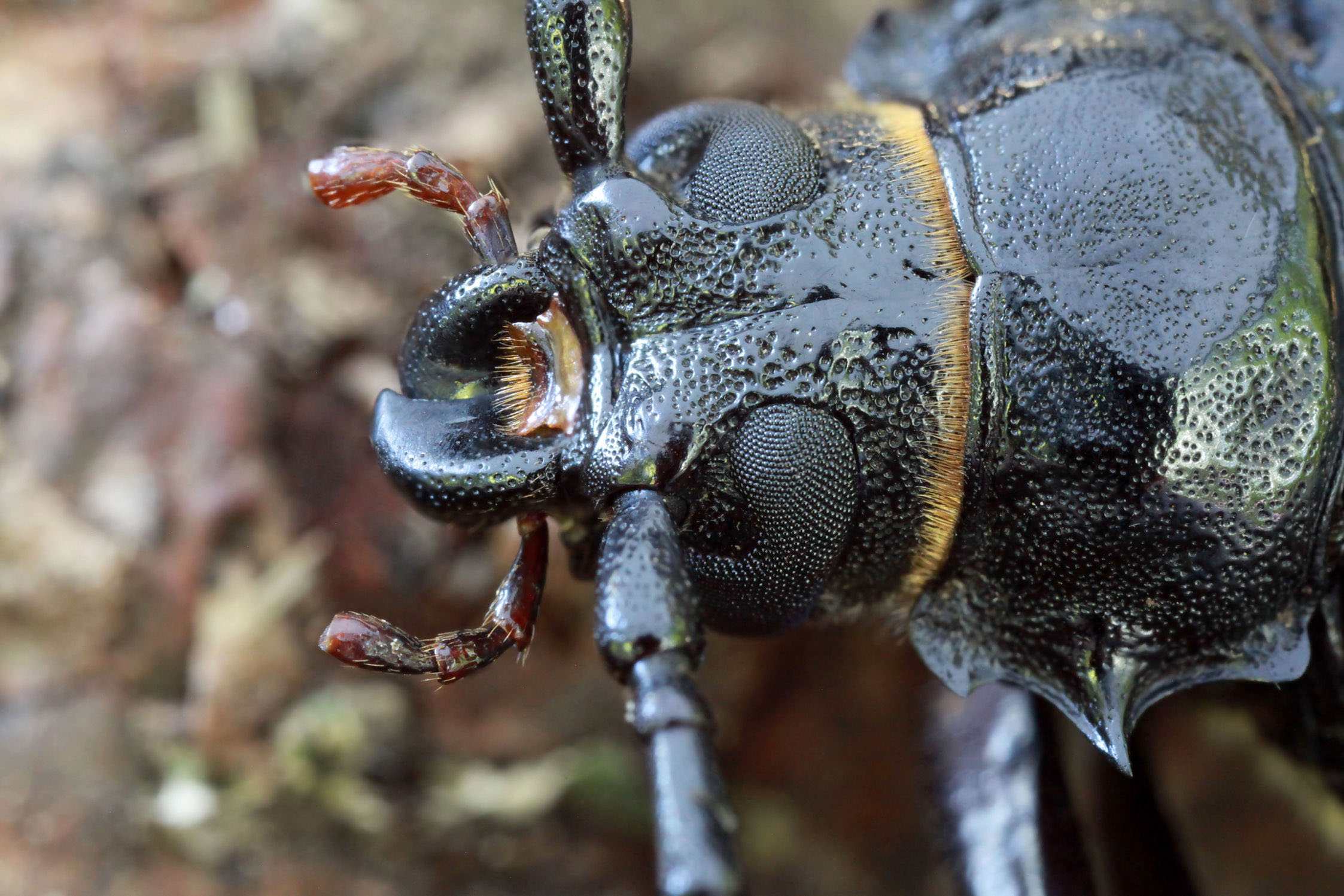Prionus coriarius is polyphagous species, developing in rotten wood of deciduous and coniferous trees. Female lays eggs on basal parts
of dead trees and the hatched larvae bore into the wood and proceed down into the roots, which are the main food source. If food resources
in one root are exhausted the larvae are able to move through the soil to reach nearby roots.
After 3-5 years the larvae leave the roots for the surrounding soil and construct a cocoon out of soil particles, the size of a chicken egg.
The larvae cocoon in early summer and typically emerge as fully formed adults in July-August; males tend to emerge before the females.
You can encounter this remarkable beetle most likely in the afternoon or at dusk around the bases of dead or damaged trees [❖][✧].
Prionus coriarius has been described from "Europa" as Cerambyx coriarius by Carl Linné in 1758 [✮].
| Body length: | ♂♂ 19 - 38 mm / ♀♀ 27 - 48 mm |
| Life cycle: | at least 3 years |
| Adults in: | July - September |
| Host plant: | polyphagous in rotten wood of deciduous and coniferous trees |
| Distribution: | forest areas of Europe, Turkey, Caucasus, Transcaucasia, Iran and North Africa |
The depicted mounted beetle was collected in Hodonín environs (South Moravia, Czechia) on July 27, 2019.
The living specimens were photographed in: ♂ - Náměšťská obora Nature Monument (Náměšť nad Oslavou, Třebíč district, Vysočina region,
Czechia) on July 14, 2019; ♀ - Lunca la Tisa environs (Bocicoiu Mare commune, Maramureș county, Nord-Vest region, Romania)
on June 26, 2019.
Collected by David Navrátil and Daniel Rydzi
[❖]
Sláma M.E.F.:
Tesaříkovití – Cerambycidae České republiky a Slovenské republiky / Cerambycidae of the Czech Republic and Slovak Republic.
Milan Sláma private printing, Krhanice, 383pp [pages 94-95], 1998 [ISBN: 80-238-2627-1].
[download  ]
]
[✧]
Danilevsky M.L.:
Longicorn beetles (Coleoptera, Cerambycoidea) of Russia and adjacent countries. Part 1.
Higher School Consulting, Moscow, 550pp [page 42-43], 2014.
[download  ]
]
[✮]
Linné C.:
Systema naturæ per regna tria naturæ secundum classes, ordines, genera, species, cum characteribus, differentiis, synonymis, locis.
Systema naturae (Editio 10) Laur. Salvius, Holmiae 1: 824pp [page 389], 1758.
[download  ]
]
